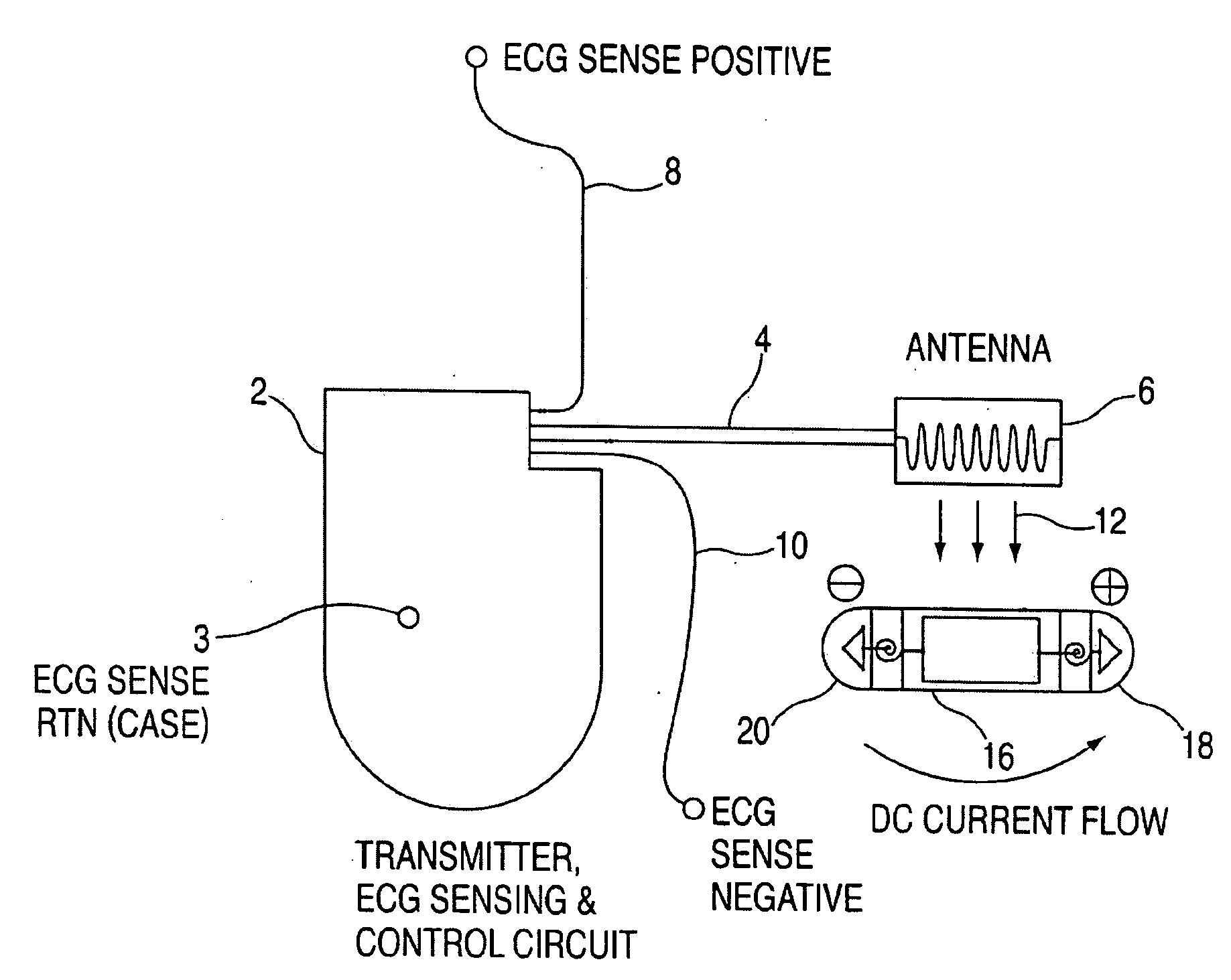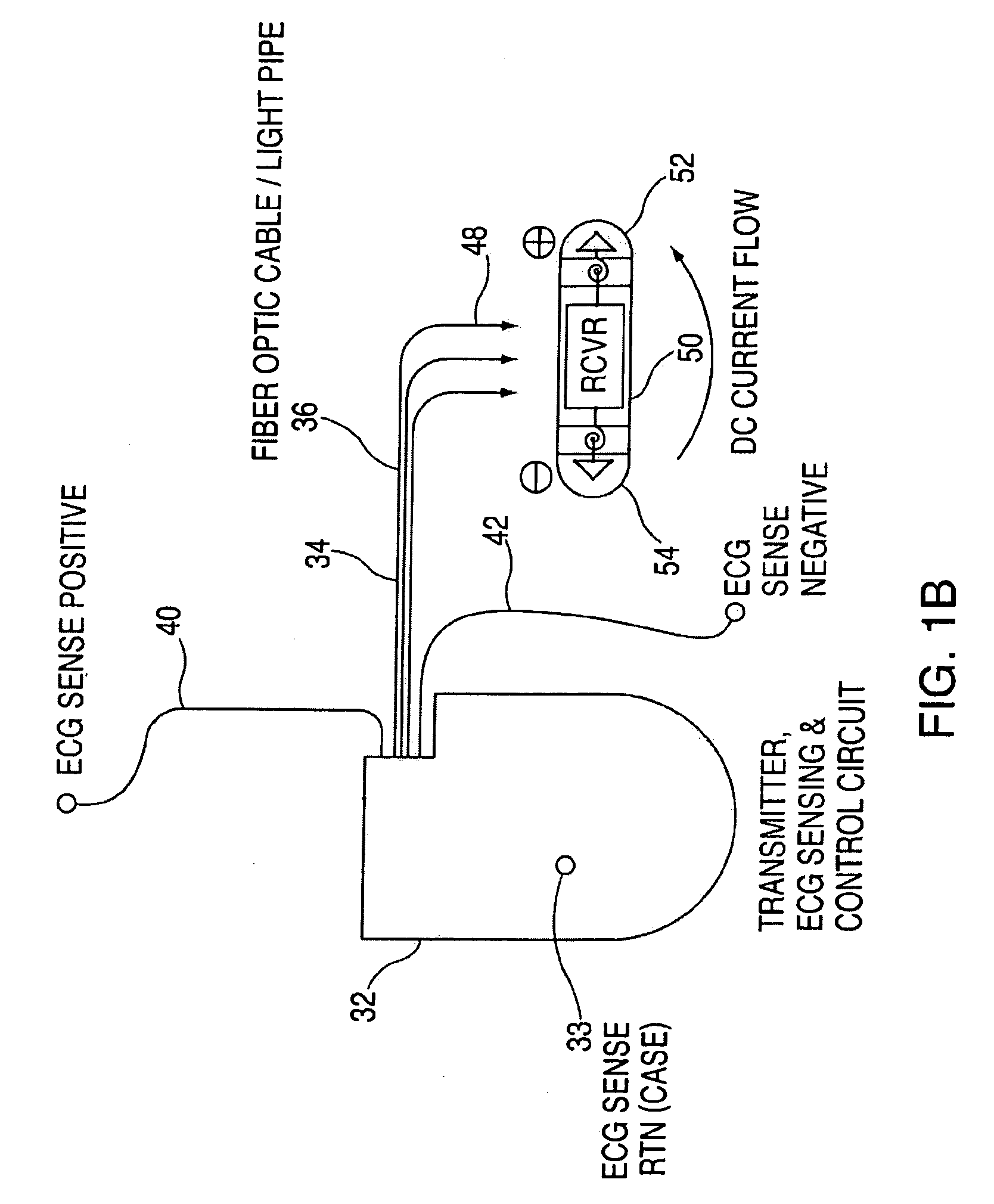Apparatus and method for treating atrial fibrillation and atrial tachycardia
a technology of atrial fibrillation and atrial tachycardia, which is applied in the field of atrial fibrillation af and atrial tachycardia treatment, can solve the problems of electrical current or noise external to the patient's heart, interfere with the transmission of electrical signals within the heart, interfere with signals within the left and right atria, etc., and achieve the elimination or minimization of the use of pharmaceuticals, elimination of severe dc shocks, and elimination
- Summary
- Abstract
- Description
- Claims
- Application Information
AI Technical Summary
Benefits of technology
Problems solved by technology
Method used
Image
Examples
Embodiment Construction
[0089]One aspect of the invention is based upon the principle that the source impedance of a DC current blocking device, useful according to the invention, is much lower than the higher source impedance of the cardiac conduction electrical system within the heart. The tissue becomes the “resistive load” in the circuit. Thus, for the sake of discussion, if one injects a DC voltage at a contact point at least 10 times the voltage amplitude of the existing AF / AFL signals, unwanted AF / AFL signals will be electrically overpowered and trapped out back at the return of the circuit, at a second contact point. This device causes a small current pathway through the tissue of interest. More importantly, a nerve cable or bundle can be blocked with a DC stimulus and a nerve is basically a cable, so that the nerve cell membranes near a cathode are depolarized while the nerve cell membranes near an anode are hyperpolarized. This is a characteristic of nerves within the pulmonary veins.
[0090]The hi...
PUM
 Login to View More
Login to View More Abstract
Description
Claims
Application Information
 Login to View More
Login to View More - R&D
- Intellectual Property
- Life Sciences
- Materials
- Tech Scout
- Unparalleled Data Quality
- Higher Quality Content
- 60% Fewer Hallucinations
Browse by: Latest US Patents, China's latest patents, Technical Efficacy Thesaurus, Application Domain, Technology Topic, Popular Technical Reports.
© 2025 PatSnap. All rights reserved.Legal|Privacy policy|Modern Slavery Act Transparency Statement|Sitemap|About US| Contact US: help@patsnap.com



